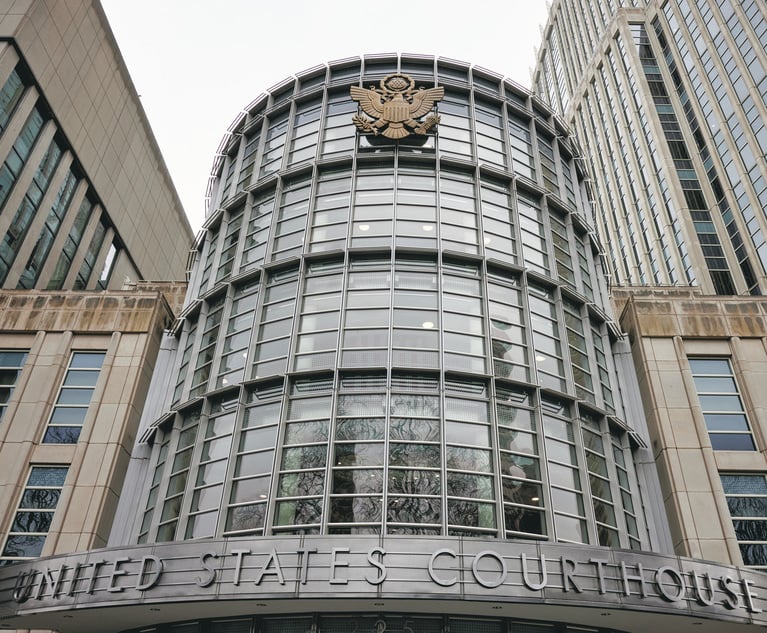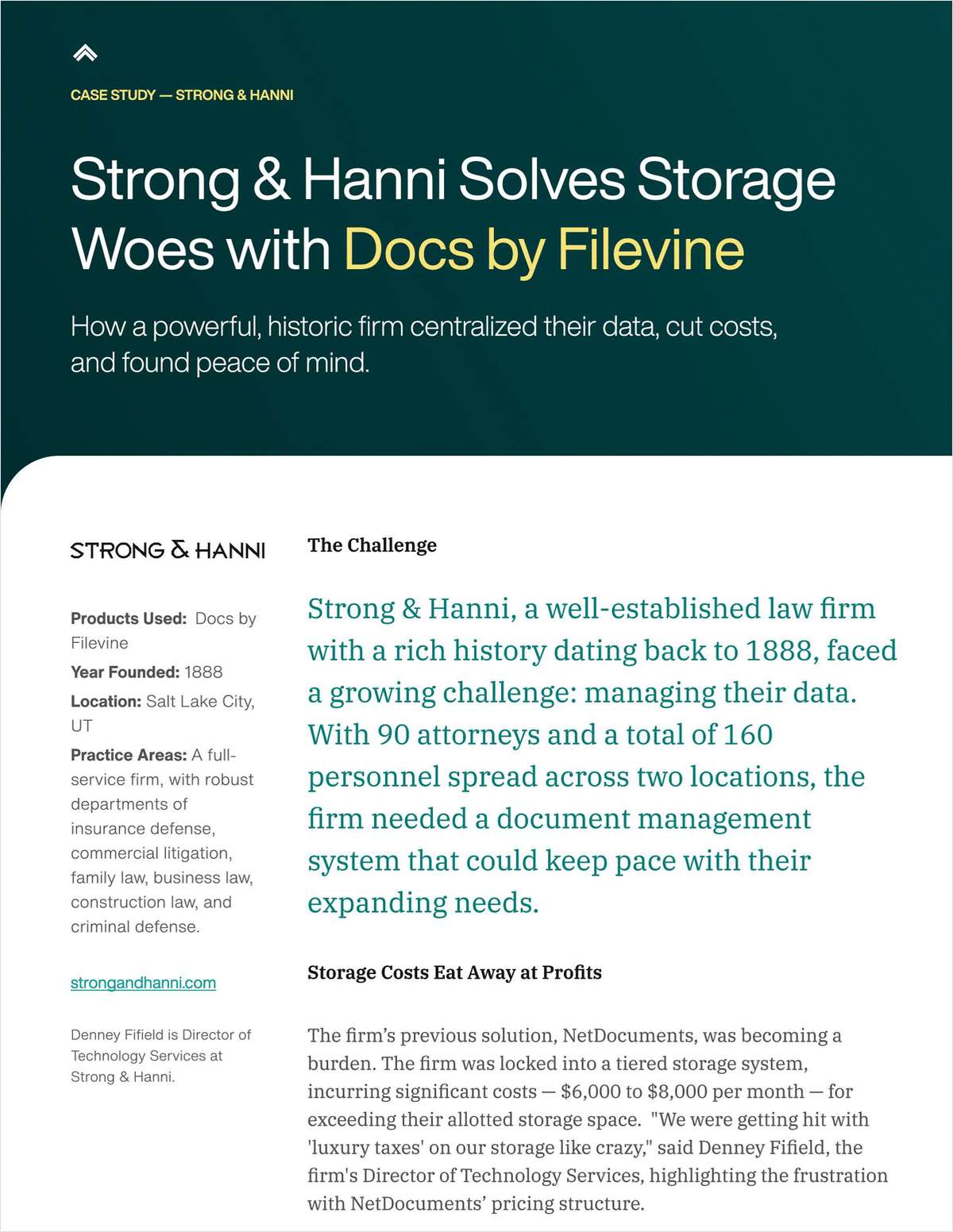 Judge Guido Calabresi of the U.S. Court of Appeals for the Second Circuit has more former clerks teaching at law schools than any other judge.
Judge Guido Calabresi of the U.S. Court of Appeals for the Second Circuit has more former clerks teaching at law schools than any other judge.Want to Be a Law Prof? Clerk for These Judges
A new study by Florida International University law professor Howard Wasserman identifies the judges whose former clerks most often find their way into the legal academy.
February 04, 2020 at 01:32 PM
7 minute read
A judicial clerkship is a resume booster for any aspiring legal academic, but some judges are far more likely than others to launch former clerks into law professor gigs.
That's the takeaway from a new draft paper examining so-called "academic feeder judges," that breaks down which federal and state court judges have the most former clerks currently on law school faculties. The study is a twist on the much-examined "feeder judge" phenomenon, which centers on the federal lower court judges who send the most clerks on to Supreme Court justices.
The paper, titled "Academic Feeder Judges," is the first comprehensive look at which jurists have the most former clerks working in legal academia. Judge Guido Calabresi of the U.S. Court of Appeals for the Second Circuit landed in the top spot, with 42 former clerks now teaching full-time at law schools, according to the paper. Calabresi is followed by the late Ninth Circuit Judge Stephen Reinhardt with 32; D.C. Circuit Judge Stephen Williams with 29; and Ninth Circuit Judge Dorothy Nelson and retired Seventh Circuit Judge Richard Posner, both with 28.
"Given the intimate (if not essential) connection between clerkships and the legal academy, the time is right to identify academic feeder judges—the judges for whom significant numbers of law professors clerked at the beginning of their careers and the judges who 'produce' law professors from the ranks of their former clerks," reads the paper by Howard Wasserman, associate dean for research and faculty development at Florida International University College of Law.
In an interview Tuesday, Wasserman took pains to clarify that judges don't place their clerks in law teaching jobs—a clerkship is but one of several criteria schools consider when hiring, and there is no longer a direct line from a judge's chambers to a law school podium. Most new law professors now spend several years in practice or in temporary teaching positions before moving into the academy, thus the process is more removed than, say, a lower court feeder judge helping a clerk land a position with a Supreme Court justice.
But Wasserman's research shows a wide disparity among judges when it comes to helping usher former clerks into the academy. For instance, the researchers identified 325 lower court judges with at least three former clerks now teaching, but only 101 of them have eight or more former clerks now at law schools. Former legal academics now on the bench tend to have more former clerks at law schools, Wasserman found. They include Calabresi, who was a former dean of Yale Law School; Williams, who taught at the University of Colorado Law School; Nelson, who taught at the University of Southern California Gould School of Law; and Posner, who taught at the University of Chicago Law School.
Aspiring legal academics may be drawn to judges who have law school experience during the clerkship application process, Wasserman noted, and law school hiring committees may be more familiar with the names of judges who have also passed through the academy. That in turn helps candidates with those clerkships on their resumes. But Wasserman said the results of his study are unlikely to change the approach of aspiring academics as they apply for clerkships.
"Nobody is suddenly going to apply to clerk for Judge Calabresi who wouldn't have otherwise," he said. "Maybe someone who is picking among a number of judges might make their selection based on this, but the attenuation is so great. I don't know how much it will affect anyone's behavior."
Wasserman got the idea for the study about seven years ago, when he and other former clerks of Third Circuit Judge Jane Roth were organizing a reunion to coincide with her official portrait unveiling at the courthouse.
"There were emails flying around among her former clerks for about a year and a half. I happened to look at one email and noticed a lot of .edu addresses on the list," he said of the email suffix used by colleges and universities. "I counted and it was about 13 at that point. I wondered if that was a lot or a little. So I thought, 'That would be a really interesting study to do.'"
For the record, Wasserman's former boss Roth ranks 37th overall as an "academic feeder judge" among the lower courts.
It took years to find the time to launch the study, but eventually Wasserman and his researchers were able to comb through the resumes of nearly 10,000 full-time law professors and catalogue the judges for whom they had clerked. In all, nearly 38% had judicial clerk experience.
Wasserman sliced the data in several different ways. In addition to looking at which lower court judges had the most former clerks teaching overall, he performed a separated analysis on lower court judges appointed since 1995. In that category, Judge Merrick Garland of the D.C. Circuit claimed the top spot, with 15 former clerks now teaching. He was followed by Judge Robert Sack of the Second Circuit and Judge Wallace Tashima of the Ninth Circuit, both of whom have 12 former clerks teaching.
He also looked at the Supreme Court and found that among the sitting justices, Ruth Bader Ginsburg has the most former clerks now teaching, with 29. Stephen Breyer is next with 24, followed by Clarence Thomas with 13. Unsurprisingly, former Supreme Court clerks now in academia are clustered at top law schools, the paper notes.
Interestingly, Wasserman found significant overlap between the traditional lower court "feeder judges" who send clerks to the Supreme Court and those who have many former clerks now teaching in law schools. Since 2004, 11 lower court judges have placed 20 or more clerks at the Supreme Court, and seven of those same judges now have 10 or more former clerks in legal academia, according to the paper.
The research team also collected data on law professors who clerked for state judges, but found far fewer who took that path into the academy. Just 14 state court judges had three or more former clerks now teaching at law schools.
"This is not to disparage state-court judges or the professors who began their careers on state supreme courts, either years ago or more recently," the paper reads. "But it reflects the common perception that state courts, and state-court clerkships, carry less prestige. And law graduates eyeing teaching careers may conclude that federal courts, at any level, represent a better path to the academy."
In the end, the data may end up being most useful to federal judges, Wasserman noted, allowing them to see how they stack up against colleagues on other circuit courts when it comes to helping produce legal academics.
"I'm not an empiricist by trade, but I think it's one of those things where the numbers are fun and interesting to look at," he said. "It gives us a big picture of the world, even if it doesn't lead us to any broad conclusions."
This content has been archived. It is available through our partners, LexisNexis® and Bloomberg Law.
To view this content, please continue to their sites.
Not a Lexis Subscriber?
Subscribe Now
Not a Bloomberg Law Subscriber?
Subscribe Now
NOT FOR REPRINT
© 2024 ALM Global, LLC, All Rights Reserved. Request academic re-use from www.copyright.com. All other uses, submit a request to [email protected]. For more information visit Asset & Logo Licensing.
You Might Like
View All
'No Evidence'?: Big Law Firms Defend Academic Publishers in EDNY Antitrust Case
3 minute read
Law Firms Are Turning to Online Training Platforms as Apprenticeship Model Falters

'Substantive Deficiencies': Judge Grants Big Law Motion Dismissing Ivy League Price-Fixing Claims
3 minute read
Class Action Lawsuit Targets 40 Private Colleges and Universities Over Alleged Price-Fixing
3 minute readTrending Stories
- 1Infant Formula Judge Sanctions Kirkland's Jim Hurst: 'Overtly Crossed the Lines'
- 2Trump's Return to the White House: The Legal Industry Reacts
- 3Election 2024: Nationwide Judicial Races and Ballot Measures to Watch
- 4Climate Disputes, International Arbitration, and State Court Limitations for Global Issues
- 5Judicial Face-Off: Navigating the Ethical and Efficient Use of AI in Legal Practice [CLE Pending]
- 6How Much Does the Frequency of Retirement Withdrawals Matter?
Who Got The Work
Michael G. Bongiorno, Andrew Scott Dulberg and Elizabeth E. Driscoll from Wilmer Cutler Pickering Hale and Dorr have stepped in to represent Symbotic Inc., an A.I.-enabled technology platform that focuses on increasing supply chain efficiency, and other defendants in a pending shareholder derivative lawsuit. The case, filed Oct. 2 in Massachusetts District Court by the Brown Law Firm on behalf of Stephen Austen, accuses certain officers and directors of misleading investors in regard to Symbotic's potential for margin growth by failing to disclose that the company was not equipped to timely deploy its systems or manage expenses through project delays. The case, assigned to U.S. District Judge Nathaniel M. Gorton, is 1:24-cv-12522, Austen v. Cohen et al.
Who Got The Work
Edmund Polubinski and Marie Killmond of Davis Polk & Wardwell have entered appearances for data platform software development company MongoDB and other defendants in a pending shareholder derivative lawsuit. The action, filed Oct. 7 in New York Southern District Court by the Brown Law Firm, accuses the company's directors and/or officers of falsely expressing confidence in the company’s restructuring of its sales incentive plan and downplaying the severity of decreases in its upfront commitments. The case is 1:24-cv-07594, Roy v. Ittycheria et al.
Who Got The Work
Amy O. Bruchs and Kurt F. Ellison of Michael Best & Friedrich have entered appearances for Epic Systems Corp. in a pending employment discrimination lawsuit. The suit was filed Sept. 7 in Wisconsin Western District Court by Levine Eisberner LLC and Siri & Glimstad on behalf of a project manager who claims that he was wrongfully terminated after applying for a religious exemption to the defendant's COVID-19 vaccine mandate. The case, assigned to U.S. Magistrate Judge Anita Marie Boor, is 3:24-cv-00630, Secker, Nathan v. Epic Systems Corporation.
Who Got The Work
David X. Sullivan, Thomas J. Finn and Gregory A. Hall from McCarter & English have entered appearances for Sunrun Installation Services in a pending civil rights lawsuit. The complaint was filed Sept. 4 in Connecticut District Court by attorney Robert M. Berke on behalf of former employee George Edward Steins, who was arrested and charged with employing an unregistered home improvement salesperson. The complaint alleges that had Sunrun informed the Connecticut Department of Consumer Protection that the plaintiff's employment had ended in 2017 and that he no longer held Sunrun's home improvement contractor license, he would not have been hit with charges, which were dismissed in May 2024. The case, assigned to U.S. District Judge Jeffrey A. Meyer, is 3:24-cv-01423, Steins v. Sunrun, Inc. et al.
Who Got The Work
Greenberg Traurig shareholder Joshua L. Raskin has entered an appearance for boohoo.com UK Ltd. in a pending patent infringement lawsuit. The suit, filed Sept. 3 in Texas Eastern District Court by Rozier Hardt McDonough on behalf of Alto Dynamics, asserts five patents related to an online shopping platform. The case, assigned to U.S. District Judge Rodney Gilstrap, is 2:24-cv-00719, Alto Dynamics, LLC v. boohoo.com UK Limited.
Featured Firms
Law Offices of Gary Martin Hays & Associates, P.C.
(470) 294-1674
Law Offices of Mark E. Salomone
(857) 444-6468
Smith & Hassler
(713) 739-1250








